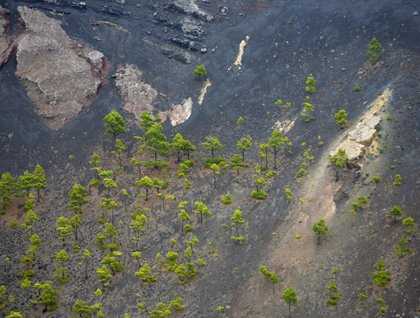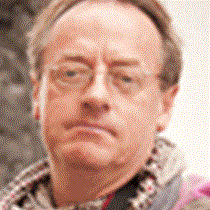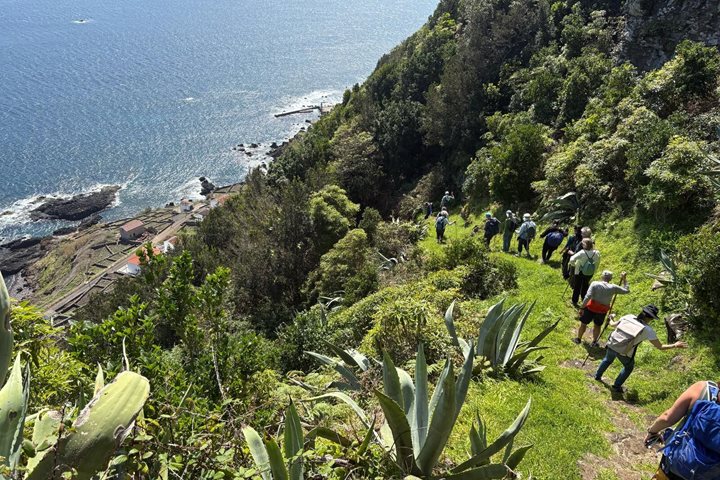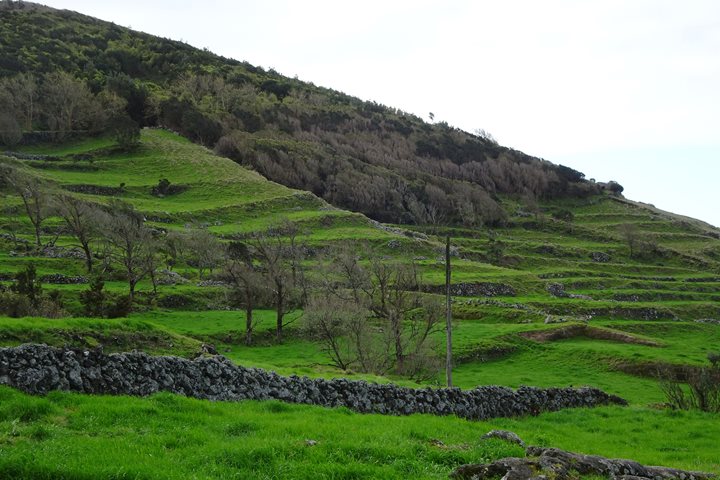A relaxing morning was spent at sea as National Geographic Explorer made its way to our first landfall in the Canary Islands – Santa Cruz – the capital and port city of La Palma. After breakfast we joined our Global Perspectives guest speaker, Ana Palacio, in the lounge for her presentation on current affairs and political developments relating to the European Union.
Shortly before lunch we arrived at Santa Cruz de la Palma. The harbor and settlement of 20,000 people are located on the base of a former volcanic crater and immediately one is struck by the complex layered geological narrative that is apparent from every view. The island of La Palma is still volcanically active. In fact there was a sizeable eruption on the east coast at Teneguía as recently as 1971. The focus following lunch was on exploring the multifaceted geological, historical and natural heritage of this, the fifth largest island of the archipelago; and what a marvellous experience it was.
Beneath an azure sky we headed off on our respective tour choices. The island has a dramatic topography. Winding roads led us high up into the interior where we arrived at the visitor centre of the national park. Here an interesting display gave us an insight into the geology and wildlife of this protected nature reserve. A number of stops at well-chosen viewpoints provided us with wide-angle vistas of coastline and mountain, and a landscape in part manicured by human activity in the guise of banana plantations and grape vines enclosed by small stone walls.
A highlight was a walk along the rim of the San Antonio Volcano which last erupted in 1673. The gigantic crater is slowly becoming colonised by Canary Pine, whose fulgent fresh greenery is in sheer contrast to the duller tones of scoria and ash. Volcanic bombs pepper the slopes. The trail leads to a platform which affords unobstructed views of the coast and the site of the last volcanic eruption at Teneguía. The mineral-rich soils of the island support an important grape growing industry and during a visit to a nearby Bodega we sampled some of the islands’ wines accompanied with tapas.
A small group drove to the Gran Telescopio Canarias (GTC), which is sited on the rim of the Taburiente caldera, for a visit of the facility. This had been made possible by our shipmate, Kay Henderson, who is on one of the boards of the University of Florida and whose astronomy department is involved in the operation of this telescope. Dr Rafael Guzman, a professor and researcher who works in this department, facilitated the group with a personalised visit of the facility. Invited to present at the evening recap, Dr Guzman captivated us with his knowledge of the nature of the universe and the project focus for future research using this remarkable telescope to plumb the depths and mysteries of deep space.
After dinner we were treated to an outstanding performance in the lounge by Canary Islander Benito Cadrera, a maestro at playing the timple, a small five-stringed guitar. For almost an hour, Benito, accompanied by a classical guitarist, showcased his consummate skills on this instrument. From start to finish we were drawn into the rich texture of the folk music of his homeland islands.







